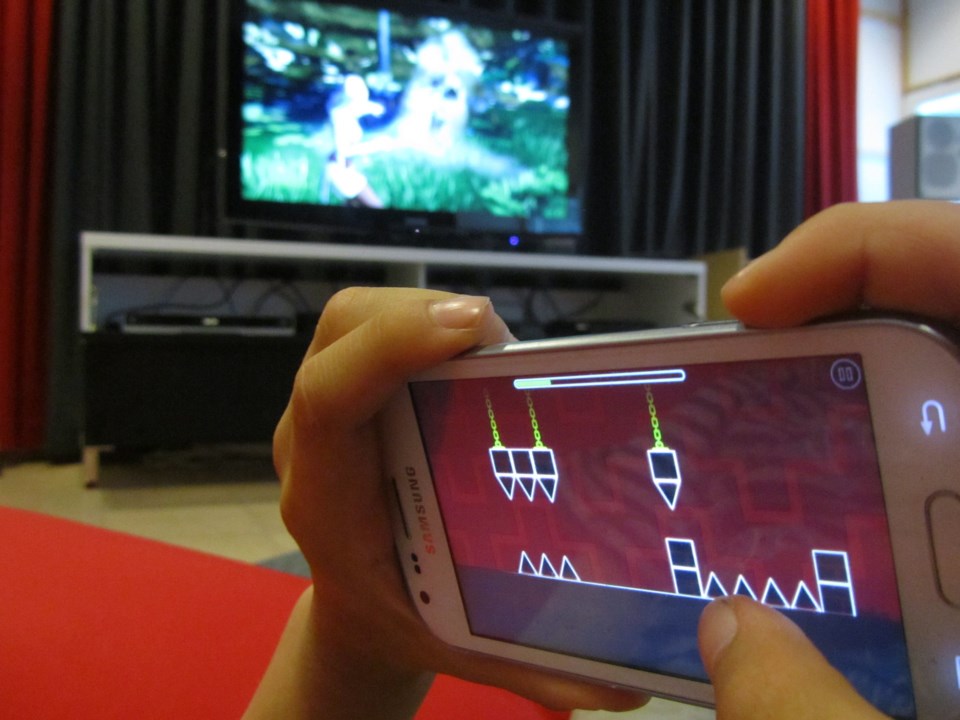When you wake up in the morning, what is one of the first things you do? If you’re a cellphone user, chances are you check for notifications. Perhaps you read the news, glance at your email or scroll through Facebook. You might even find yourself looking at a screen more often than you’d like throughout your day.
According to Benjamin Wong, clinical counsellor at Richmond Addiction Services, technology overuse affects children particularly as it can impact their education, development and mental health.
“We’re seeing evidence that the mere inclusion of digital activities in a young child’s life affects mental wellness negatively,” he said, explaining that how children develop empathy, relationships, curiosity, mindfulness and an ability to take care of themselves is impacted by early technology use.
According to Statistics Canada, 76 per cent of Canadians own a smart phone while 71 per cent own a laptop. Nearly all Canadians under the age of 45 use the Internet every day. Furthermore, according to a Pollara survey, more than 90 per cent of Canadians use at least one social media networking site.
Wong told Richmond News that this significant technology use has led to a dramatic change in classrooms as teachers need to work harder to engage students and help them build relationships.
“We see young children being very, very difficult to condition them to the way of the classroom,” he said. “The way our culture has chosen to address the issue is to include more screens in the classroom, which is essentially changing the definition of education.”
Wong pointed out that there’s no doubt that technology offers many benefits. It can increase efficiency, communication and convenience. He said the problem is that children aren’t equipped to interpret everything they see online and that often, it’s more about the adult’s needs for convenience.
“We must take a step back and ask, why does an eight-year-old need to experience the same level of convenience and speed of life and access to information as a 35-year-old executive at a major corporation,” he asked.
“One way to really mess up the brain is to allow (a child) free reign over a digital device connected to the WiFi. They do not have the ability, the knowledge, the awareness or the know-how to deal with information that floods in front of their eyes.”
Wong also noted that some children will choose an activity that gives their brain an easy quick “reward,” over one that does not. In fact, this is how technology and gaming addictions can develop. For example, a child might choose to play a video game because it can impact pleasure systems of the brain in a similar way to substances, rather than having a conversation with a family member, which isn’t guaranteed to activate the pleasure systems in the brain.
“Video games are low effort, high reward. They’re predictable,” he said. “Talking to mom may or may not turn out as ‘pleasantly.’”
Wong also discussed the rise in technology use in the mental health field. Mobile applications such as Headspace, a meditation app, or MindShift, an app developed by Anxiety BC all offer tools and strategies for increasing mindfulness and reducing anxiousness.
According to Wong, these apps can be a great way to engage individuals in a conversation about mental health, or work as part of a coordinated effort towards wellness.
The risk, he said, is when an individual relies on the app too heavily.
“The very nature of mental wellness or mental unhealth is the person’s inability to regulate emotions independent of what’s from the outside. Anything from the outside can become more of a crutch,” he said. Wong added that technology “can be helpful as a way to engage but as a long term remedy to assume that that’s part of the cure would be, for the lack of a better word, foolish.”
So what’s the solution?
“We need to slow down the pace of including digital activities in our children’s lives,” Wong said, adding that it’s not enough to limit technology use for a young child, but ask why a child needs to use technology at all.
Encouraging children to engage in creative activities or in conversations, instead of turning to technology for entertainment can also be helpful for growth and education. Participating in activities that may not offer instant gratification in the same way that technology does also strengthens resiliency. Wong also said it’s important to remember that a child’s brain is both fragile and malleable as it develops.
“We’re dealing with brains,” he said. “Let’s not mess them up.”



